John Muddeman reports from the Canary Islands
The much older semi-desert eastern islands of Lanzarote and Fuerteventura complement one another: the lovely white towns and villages of Lanzarote with their black and orange lava fields and the innumerable walls, hand-crafted for agricultural reasons over generations contrasted with the more haphazard development on well-watered Fuerteventura, an island that is now exclusive home to the endemic Fuerteventura Stonechat, which we saw extremely well at two different sites. The semi-deserts were all particularly dry this year, but still yielded two separate Houbara Bustards at point-blank range striding sedately off over the plains, flocks of Black-bellied Sandgrouse bubbling as they flew over to drink and then dash back to the plains, Saharan sand- and not Cream-coloured (!) Coursers racing through the dunes, a fine flock of large-eyed Stone-curlews roosting surprisingly close to a village, coveys of nervous Barbary Partridges, and even a fine roving flock of furtive Mediterranean Short-toed Larks, which outside the breeding season can be surprisingly hard to find. A few Trumpeter Finches, including adults were still feeding young in one area of vineyards, ‘chipping’ Berthelot’s Pipits were widespread, while local Kentish Plovers were the star among a few common waders and gulls at different coastal sites and Salinas. Excellent numbers of Cory’s Shearwaters were encountered on the return ferry journeys between these two islands, while our very first stop on Lanzarote even revealed a few Atlantic Canaries, very localised on the island, in addition to degener African Blue Tits and secretive Spectacled Warblers.
The two main central islands displayed greater diversity than the dry eastern ones. Gran Canaria yielded its critically endangered Blue Chaffinch, as well as single-island races of Great Spotted Woodpecker, African Blue Tit and Canary Islands Chaffinch –a very recent, but long-awaited split from European Chaffinch– in the hot Canary Pine forests near its summit. Numerous Gran Canaria Robins (a mooted split from European Robin and also from Tenerife Robin following recent research!) certainly performed and enabled us to both see and hear them well, much to our delight! The first of numerous Canary Islands Chiffchaffs sang their jumbled songs just about everywhere we stopped and Plain Swifts were far commoner than to the east, even if we had seen ones and twos cruising at head height low through the streets in Lanzarote!
The more wooded island of Tenerife, thanks to the forest crown of Canary Pine and some large patches of laurel forest bathed by the mist brought in on the trade winds, also gave up a few of its treasures. Laurel and Bolle’s Pigeons both gave good views, even if we had to work harder for them than normal, while the island races of both Canary Islands Chaffinch, Great Spotted Woodpecker and also the confiding Tenerife Blue Chaffinch were in much greater abundance than their counterparts on Gran Canaria, albeit reliant on the presence of water. A couple of diminutive “Tenerife” Goldcrests showed well, one even singing for us, and though the Tenerife Robins were rather uncooperative, we all finally managed to see one, even though they weren’t singing. Seawatching here provided us with a few Bulwer’s Petrels and a single Barolo’s Shearwater amongst the ever-present Cory’s.
Add to all this a surprise Northern Gannet, a vagrant Lesser Scaup, various “Barbary” (Peregrine) Falcons at several sites, Eleonora’s Falcons coasting overhead into the low cloud on Lanzarote, Pallid Swifts, a couple of Laughing and several European Turtle Doves, fly-over granti Eurasian Sparrowhawks, mewing insularum Common Buzzards, raucous koenigi Great Grey Shrikes, subtle local races of Eurasian Blackcap and Sardinian Warbler, small numbers of Spanish Sparrows and even last-minute Black-crowned Night-herons and Grey Wagtails, and there was something new to see, and look for, throughout!
Finally, It certainly wasn’t all just birds. Atlantic and Tenerife Lizards, flying fish from the Playa Blanca ferry, a few butterflies including a surprise male Tenerife Brimstone, a few Canary Speckled Woods and Monarchs, Epaulet Skimmer and Red-veined Dropwing amongst the dragonflies and, at the shore, numerous impressive fish including colorful wrasse and Canary Damselfish and the Atlantic Lightfoot Crab all added to fantastic visit to the Fortunate Isles. And of course, the ancient volcanic cones and lava flows of Lanzarote and colorful rolling mountains of Fuerteventura, rugged vegetated slopes of Gran Canaria and finally the impressive Teide peak and caldera provided excellent contrasts and context to the birding.
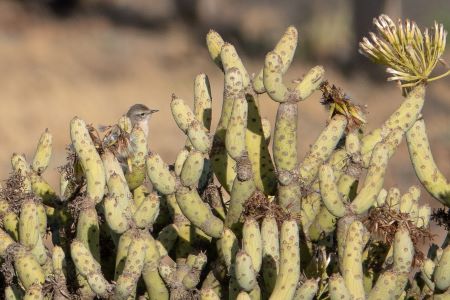
Fuerteventura Stonechat
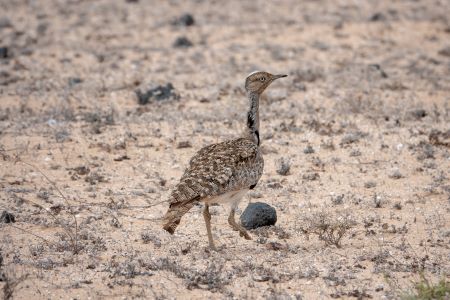
Houbara Bustard
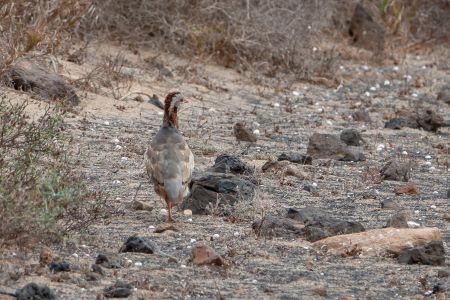
Barbary Partridge
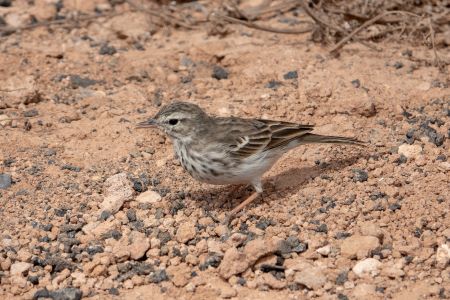
Berthelot’s Pipit
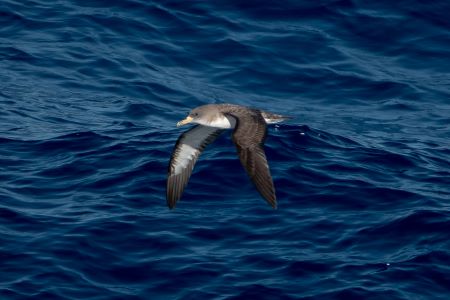
Cory's Shearwater
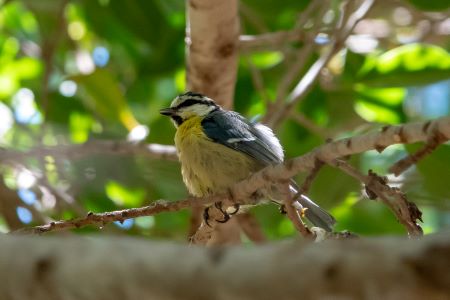
African Blue Tit
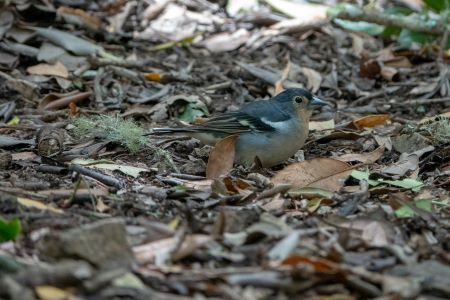
Canary Islands Chaffinch
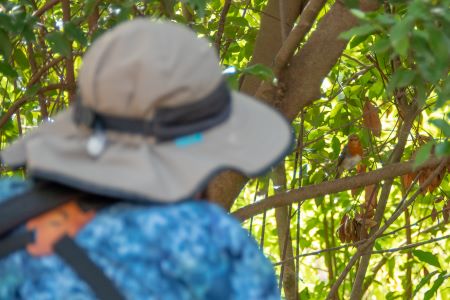
Gran Canaria Robin
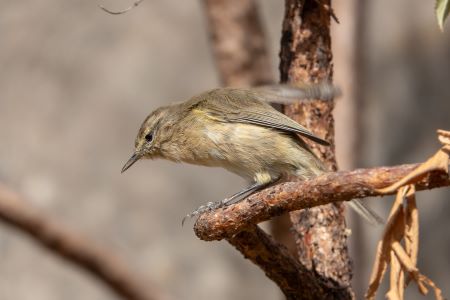
Canary Islands Chiffchaff
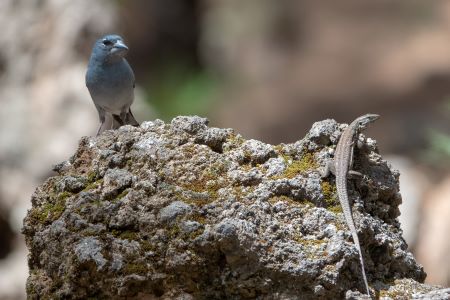
Tenerife Blue Chaffinch & Tenerife Lizard
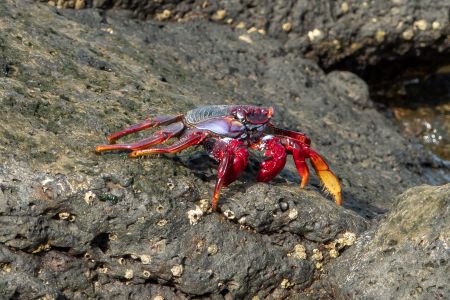
Atlantic Lightfoot Crab
